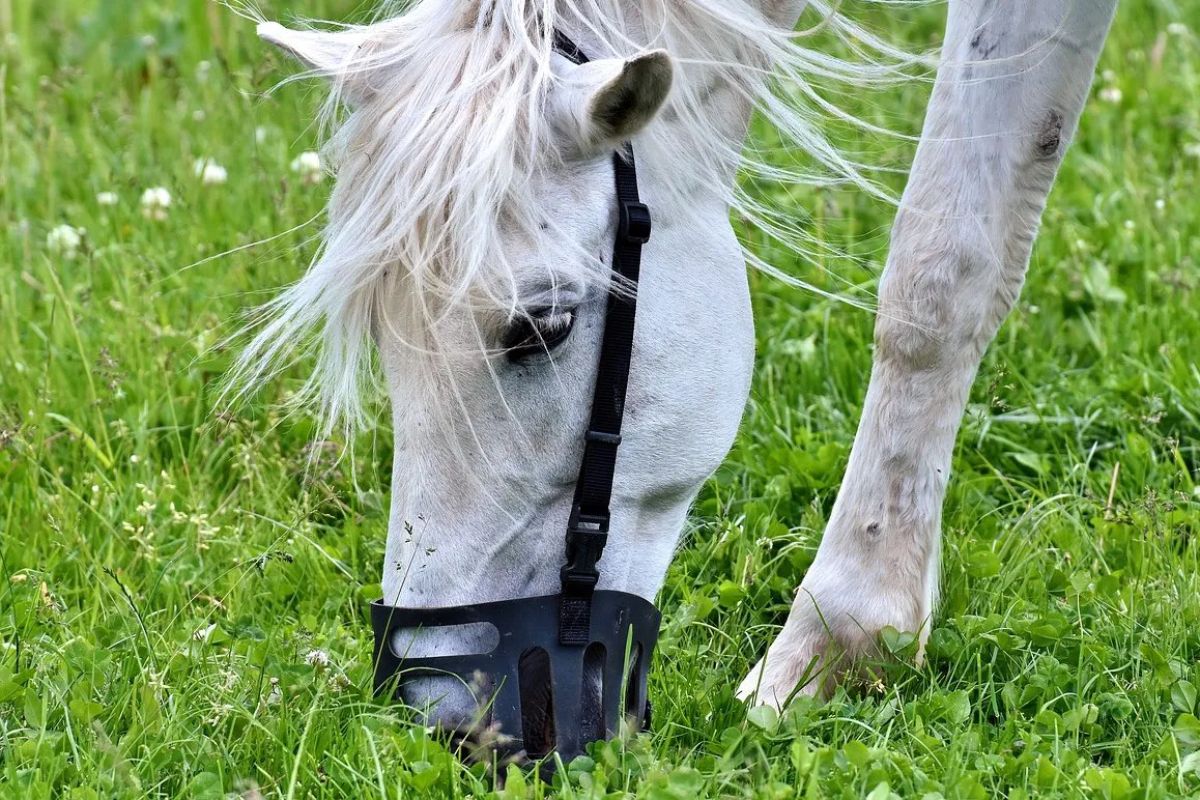Menu

What would you choose for your horse if it couldn't eat grass: to put a muzzle on it or not? It's a rather starkly posed question, we admit. Nevertheless, it’s a dilemma faced by many horse owners in the UK who have a horse that can't tolerate the summer grass.
Perhaps this thought has crossed your mind: You truly wish your horse could roam freely in the vast summer fields, just like most of the other horses in the stable, with plenty of space and the chance to be a "proper horse." If so, you're left with the tough choice of putting a muzzle on your horse to prevent it from consuming too much sugary grass. And does this really allow the horse to be its true self? You know it goes against the horse's nature, and it might feel a bit like taking your child to a sweet shop and telling them they can't have anything... Could this be how the pony in this video feels?
(The video is provided by STALDinspiration.dk)
Also read: Laminitis: Is it only the overweight horse at risk?
On the other hand, you could choose to put your horse in a dirt paddock. Here you can rest easy about its physical health, as there's not a blade of grass in sight. But what about everything else? The paddock might be smaller, and maybe your horse can only socialise with a limited number of other horses – or none at all.
When it comes to social behaviour, it's rather tough for a horse that can't eat grass. Although it can mingle with other horses while muzzled, the muzzle makes it difficult to nuzzle and even sniff the others to some extent. Vet Nanna Luthersson suggests in a study that it's crucial to give the horse a break from the muzzle if one chooses to use it:
"Muzzles can be used but only for limited periods and only if the horse is cared for and monitored daily. Muzzles should be adjusted so the horse can still drink water, without the risk of them suddenly falling off. Muzzles hinder the horse's typical social interactions with other horses in the herd and therefore should never be used for long stretches at a time."
The question remains, what's truly best for the horse? Can one balance socialisation and instincts against physical health, and how should one weigh it up?
Also read (sponsored content): Many cases of laminitis: How to deal with and prevent it
Like many things, there are pros and cons to letting your horse wear a muzzle. The advantages are few - in fact, there's probably just one. But it's significant. Your horse can reduce its grass intake by up to 80%!
Then there are the downsides. There are several, but opinions on them vary. Different horses react differently to having a muzzle put around their snout, and for most, it's a matter of trial and error. Here are some specific points of concern, besides the hindrance to the horse's natural social behaviour.
To avoid some of these issues, it might be necessary to let the horse go without the muzzle for several hours during the day. And then the question arises, perhaps a dirt paddock is best after all. What do you think? Should a horse, which isn't allowed grass, be with or without a muzzle? Or perhaps you have a completely different solution?
Also read: Scientists: Global warming increases the amount of laminitis in horses
Sources: GLS Hestefoder & Nanna Luthersson